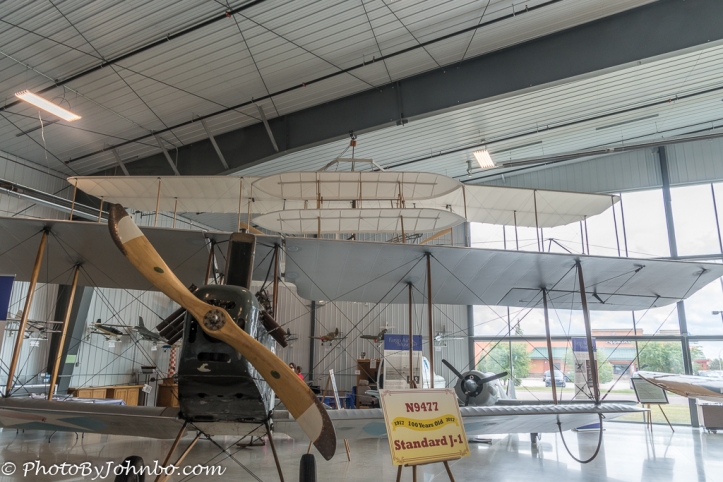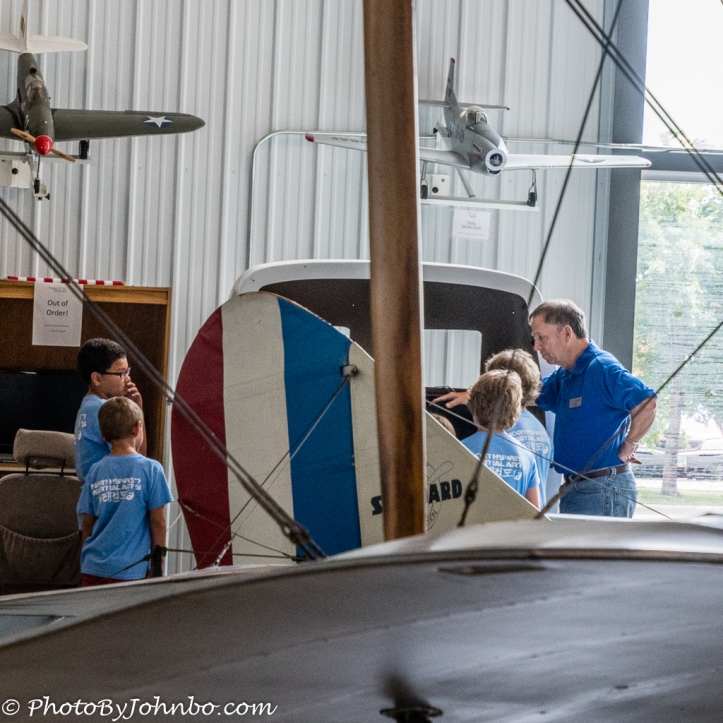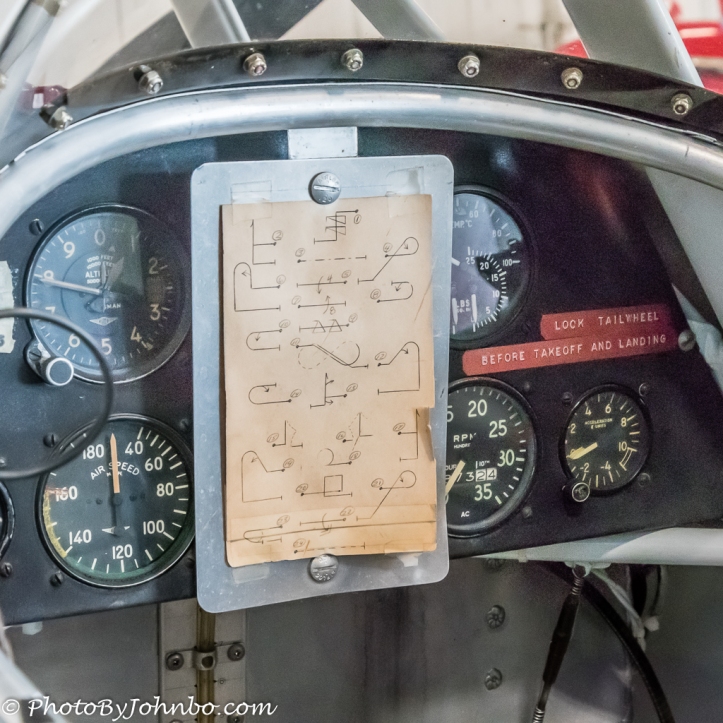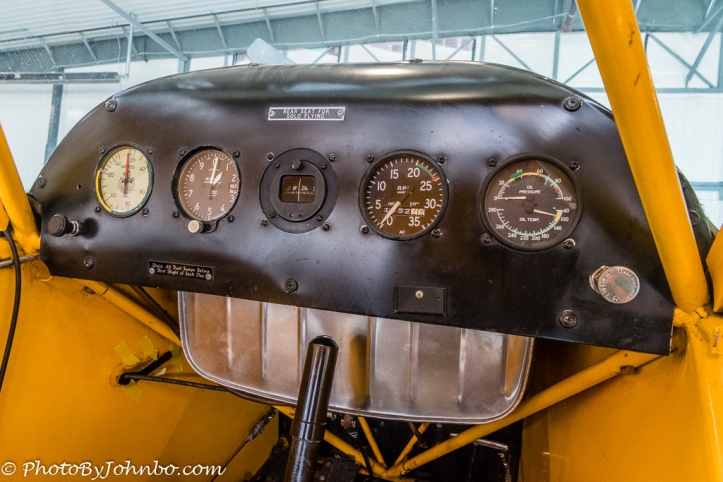Fargo, North Dakota.
The Fargo Air Museum is a bit different from most of the air museums I’ve had a chance to visit. Unlike most museums, many of the airplanes on display here might find themselves in the air occasionally. Most of the aircraft are flyable. It might be a fully restored P-51 Mustang or a late model Cessna. Of course, not every aircraft on display is flyable. Some that were flyable had their “wings clipped” (made unflyable) by their previous owner and the donation made to the museum on the condition that the aircraft be used for display purposes only. In the opening photo, a museum volunteer gives a guided tour to a small group of prospective future pilots. The museum is staffed by volunteers who are interested in learning about the aircraft on display and in giving no-cost guided tours that highlight the historic aircraft. 
The price of admission now allows the guest to see aircraft from almost every decade since the dawn of powered aviation. There is even a replica of a Wright Flyer, carefully constructed in honor of the 100th anniversary of powered flight in 2003. That aircraft was one of two that were constructed by members of the Experimental Aircraft Association (EAA) for display at the Fargo and Minot Air Museums. The flyer now hangs from the ceiling directly in front of another century-old aircraft, the Standard J-1. This Wright Flyer wasn’t intended to fly, but it was rated as one of the most technically accurate examples built to honor the Centennial of Powered Flight.
Our friend, Fred Mast, visited on his way through town on his way east. With our mutual interest in aviation, the Air Museum would be an obvious choice for a visit. We spent a morning touring the two hangars where the exhibits are displayed at Fargo’s Hector International Airport. The image above features a chart of the aerobatic maneuvers a pilot would follow during an airshow performance. The chart is mounted front and center for the pilot of an aerobatic aircraft to reference as the performance progresses.
A restored and fully flyable P-51 Mustang is one of several World War II era aircraft on display. The pilot of this beauty, “Toby” McPherson, is an acquaintance. Several years ago, I accompanied a group of aviation enthusiasts in a twin-engine Cessna as we traveled to Oshkosh, Wisconsin. Toby was one of the pilots on that trip to visit the annual Fly-In that makes a small airport in Wisconsin the busiest airport in the world for the week of the famous aviation celebration sponsored by the EAA.
The panel of this Piper Cub is simple and functional, and it’s quite familiar to me. A friend of mine owns a PA-11 Piper Cub with a very similar panel layout. He is an instructor and is the person who taught me to fly the Cub on floats. It’s been awhile since I’ve had the opportunity to land on one of the many Minnesota lakes that are only about an hour from Fargo. Maybe in the summer of 2018, I can convince him to get me current again with three take-offs and landings on water, and in the process take a few photos and feature them here on Journeys. The gallery of images below features some of the sights at the Fargo Air Museum. You’ll note that not everything on display in the museum is an aircraft. On most browsers, you can click on one of the images below and scroll through the gallery.
John Steiner

















Sadly, my LIKE’s don’t seem to be sticking tonight. Nonetheless, as usual, I had a great time camping out in your blog tonight!
Thank you for stopping by!
Very cool!
That P-51 is pretty… It would be cool if you had two mustangs.
I can barely afford the one I have! >grin<